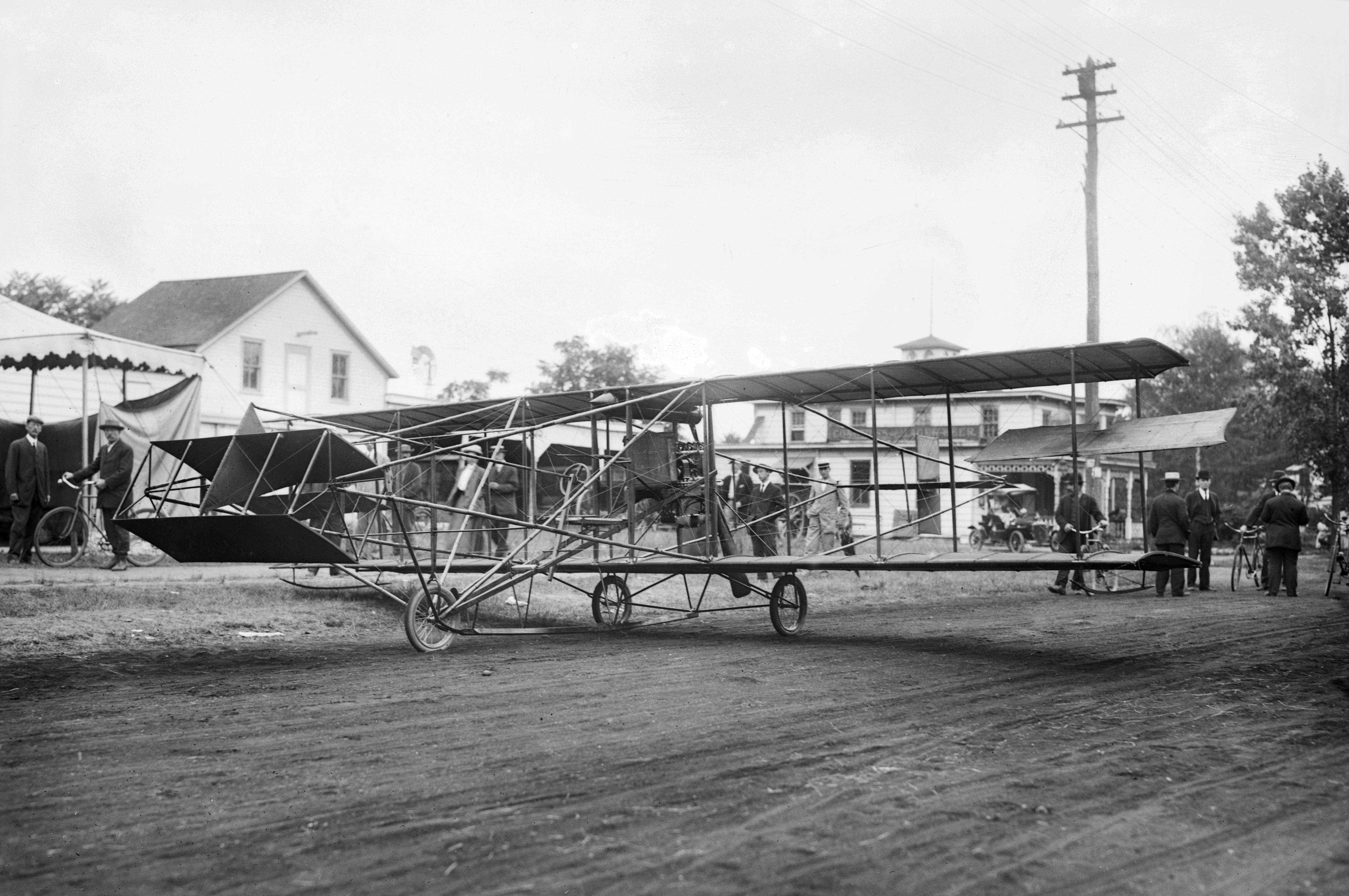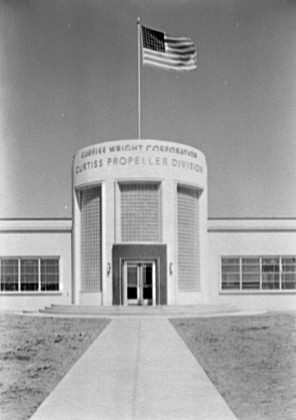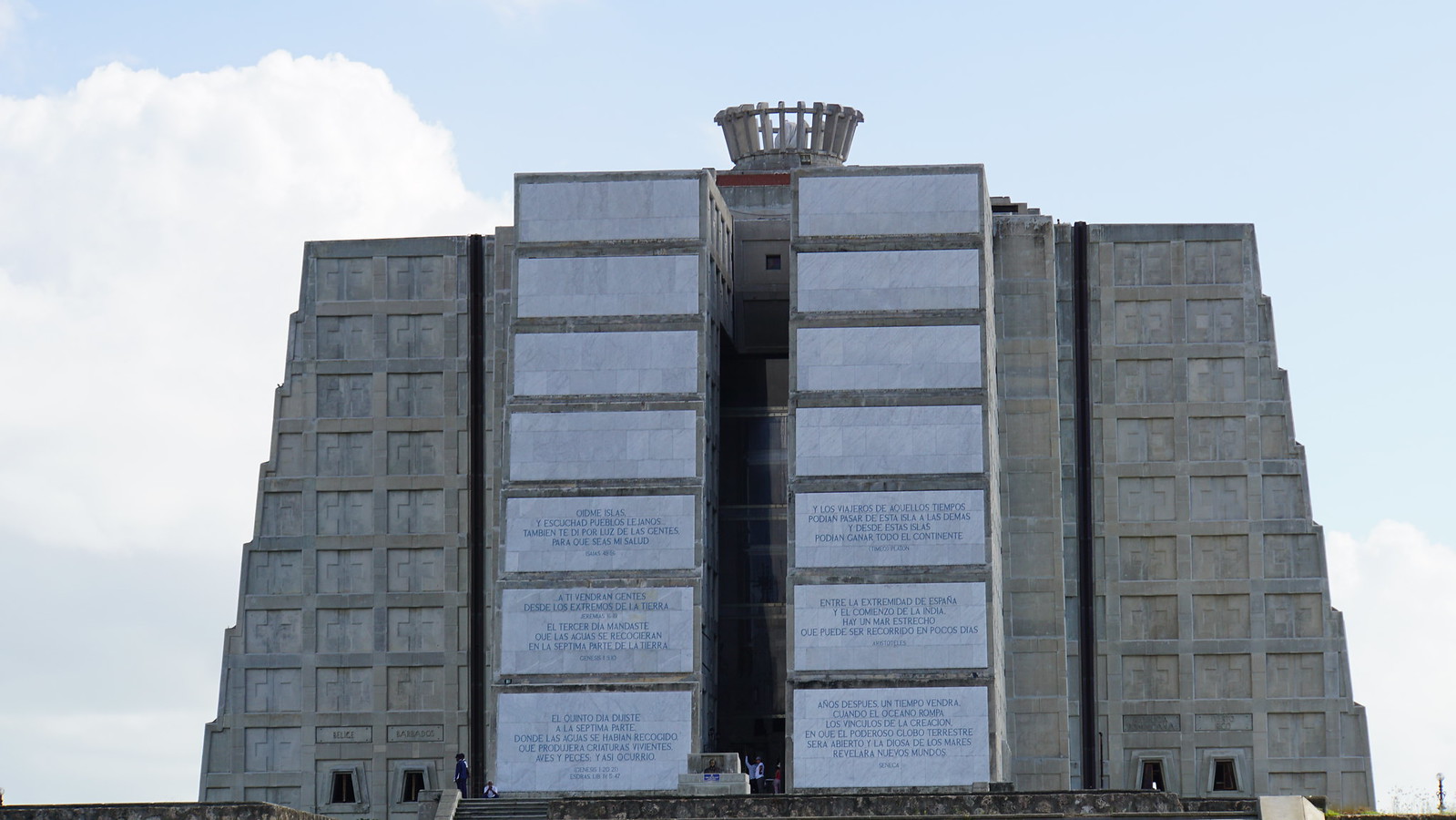|
Curtiss-Wright CW-19
The Curtiss-Wright CW-19 was a civil utility aircraft designed in the United States in the mid-1930s and built in small quantities in a number of variants including the CW-23 military trainer prototype. Design and development Originally conceived as the Curtiss-Robertson CR-2 Coupe shortly before the Curtiss-Wright merger and the dropping of the Curtiss-Robertson brand, it was an all-metal, low-wing cantilever monoplane of conventional configuration with fixed tailwheel undercarriage and side-by-side seating for two. A prominent feature on all versions other than the original CR-2 prototypes was the large "trouser"-style wheel spats. While the design was never perfected for the civil market it was originally intended for, a militarized version was soon developed that replaced the side-by-side cabin with tandem seating and added provision for guns and bombs. Production Twenty-six CW-19s of all types were produced. The first was a single CW-19L built in 1935, known as either "Coupe ... [...More Info...] [...Related Items...] OR: [Wikipedia] [Google] [Baidu] |
WikiProject Aircraft
A WikiProject, or Wikiproject, is an affinity group for contributors with shared goals within the Wikimedia movement. WikiProjects are prevalent within the largest wiki, Wikipedia, and exist to varying degrees within Wikimedia project, sibling projects such as Wiktionary, Wikiquote, Wikidata, and Wikisource. They also exist in different languages, and translation of articles is a form of their collaboration. During the COVID-19 pandemic, CBS News noted the role of Wikipedia's WikiProject Medicine in maintaining the accuracy of articles related to the disease. Another WikiProject that has drawn attention is WikiProject Women Scientists, which was profiled by ''Smithsonian Magazine, Smithsonian'' for its efforts to improve coverage of women scientists which the profile noted had "helped increase the number of female scientists on Wikipedia from around 1,600 to over 5,000". On Wikipedia Some Wikipedia WikiProjects are substantial enough to engage in cooperative activities with outsi ... [...More Info...] [...Related Items...] OR: [Wikipedia] [Google] [Baidu] |
Wright J-6-7
The Wright R-760 Whirlwind was a series of seven-cylinder air-cooled radial aircraft engines built by the Wright Aeronautical division of Curtiss-Wright. These engines had a displacement of 756 in³ (12.4 L) and power ratings of 225-350 hp (168-261 kW). Design and development Wright introduced the J-6 Whirlwind family in 1928 to replace the nine-cylinder R-790 series. The J-6 family included varieties with five, seven, and nine cylinders. The seven-cylinder version was originally known as the J-6 Whirlwind Seven, or J-6-7 for short. The U.S. government designated it as the R-760; Wright later adopted this and dropped the J-6 nomenclature. Like all the members of the J-6 Whirlwind family, the R-760 had larger cylinders than the R-790. The piston stroke of 5.5 in (14.0 cm) was unchanged, but the cylinder bore was expanded to 5.0 in (12.7 cm) from the R-790's bore of 4.5 in (11.4 cm). While the R-790 was naturally aspirated, the ... [...More Info...] [...Related Items...] OR: [Wikipedia] [Google] [Baidu] |
Curtiss Aircraft
The Curtiss Aeroplane and Motor Company (1909–1929) was an American aircraft manufacturer originally founded by Glenn Hammond Curtiss and Augustus Moore Herring in Hammondsport, New York. After significant commercial success in its first decades, it merged with the Wright Aeronautical to form Curtiss-Wright Corporation. History Origin In 1907, Glenn Curtiss was recruited by the scientist Dr. Alexander Graham Bell as a founding member of Bell's Aerial Experiment Association (AEA), with the intent of establishing an aeronautical research and development organization. According to Bell, it was a "co-operative scientific association, not for gain but for the love of the art and doing what we can to help one another."Milberry 1979, p 13. In 1909, shortly before the AEA was disbanded, Curtiss partnered with Augustus Moore Herring to form the Herring-Curtiss Company.Gunston 1993, p. 87. It was renamed the Curtiss Aeroplane Company in 1910 and reorganized in 1912 after being ... [...More Info...] [...Related Items...] OR: [Wikipedia] [Google] [Baidu] |
Aircraft First Flown In 1935
An aircraft ( aircraft) is a vehicle that is able to fly by gaining support from the air. It counters the force of gravity by using either static lift or the dynamic lift of an airfoil, or, in a few cases, direct downward thrust from its engines. Common examples of aircraft include airplanes, rotorcraft (including helicopters), airships (including blimps), gliders, paramotors, and hot air balloons. Part 1 (Definitions and Abbreviations) of Subchapter A of Chapter I of Title 14 of the U. S. Code of Federal Regulations states that aircraft "means a device that is used or intended to be used for flight in the air." The human activity that surrounds aircraft is called ''aviation''. The science of aviation, including designing and building aircraft, is called ''aeronautics.'' Crewed aircraft are flown by an onboard pilot, whereas unmanned aerial vehicles may be remotely controlled or self-controlled by onboard computers. Aircraft may be classified by different criteria, such as ... [...More Info...] [...Related Items...] OR: [Wikipedia] [Google] [Baidu] |
Low-wing Aircraft
A monoplane is a fixed-wing aircraft configuration with a single mainplane, in contrast to a biplane or other types of multiplane (aeronautics), multiplanes, which have multiple wings. A monoplane has inherently the highest efficiency and lowest drag of any wing configuration and is the simplest to build. However, during the early years of flight, these advantages were offset by its greater weight and lower manoeuvrability, making it relatively rare until the 1930s. Since then, the monoplane has been the most common form for a fixed-wing aircraft. Characteristics Support and weight The inherent efficiency of the monoplane is best achieved in the cantilever wing, which carries all structural forces internally. However, to fly at practical speeds the wing must be made thin, which requires a heavy structure to make it strong and stiff enough. External Bracing (aeronautics), bracing can be used to improve structural efficiency, reducing weight and cost. For a wing of a given size, ... [...More Info...] [...Related Items...] OR: [Wikipedia] [Google] [Baidu] |
1930s United States Civil Utility Aircraft
Year 193 ( CXCIII) was a common year starting on Monday of the Julian calendar. At the time, it was known as the Year of the Consulship of Sosius and Ericius (or, less frequently, year 946 ''Ab urbe condita''). The denomination 193 for this year has been used since the early medieval period, when the Anno Domini calendar era became the prevalent method in Europe for naming years. Events By place Roman Empire * January 1 – Year of the Five Emperors: The Roman Senate chooses Publius Helvius Pertinax, against his will, to succeed the late Commodus as Emperor. Pertinax is forced to reorganize the handling of finances, which were wrecked under Commodus, to reestablish discipline in the Roman army, and to suspend the food programs established by Trajan, provoking the ire of the Praetorian Guard. * March 28 – Pertinax is assassinated by members of the Praetorian Guard, who storm the imperial palace. The Empire is auctioned off; Marcus Didius Julianus the highest ... [...More Info...] [...Related Items...] OR: [Wikipedia] [Google] [Baidu] |
Wright R-760E2 Whirlwind
The Wright R-760 Whirlwind was a series of seven-cylinder air-cooled radial aircraft engines built by the Wright Aeronautical division of Curtiss-Wright. These engines had a displacement of 756 in³ (12.4 L) and power ratings of 225-350 hp (168-261 kW). Design and development Wright introduced the J-6 Whirlwind family in 1928 to replace the nine-cylinder R-790 series. The J-6 family included varieties with five, seven, and nine cylinders. The seven-cylinder version was originally known as the J-6 Whirlwind Seven, or J-6-7 for short. The U.S. government designated it as the R-760; Wright later adopted this and dropped the J-6 nomenclature. Like all the members of the J-6 Whirlwind family, the R-760 had larger cylinders than the R-790. The piston stroke of 5.5 in (14.0 cm) was unchanged, but the cylinder bore was expanded to 5.0 in (12.7 cm) from the R-790's bore of 4.5 in (11.4 cm). While the R-790 was naturally aspirated, the ... [...More Info...] [...Related Items...] OR: [Wikipedia] [Google] [Baidu] |
Curtiss-Wright CW-19R 3-view L'Aerophile February 1937
The Curtiss-Wright Corporation is an American manufacturer and services provider headquartered in Davidson, North Carolina, with factories and operations in and outside the United States. Created in 1929 from the consolidation of Curtiss, Wright, and various supplier companies, the company was immediately the country's largest aviation firm and built more than 142,000 aircraft engines for the U.S. military during World War II. It no longer makes aircraft but still makes many related components, particularly actuators, aircraft controls, valves, and it provides surface-treatment services. It supplies equipment to the commercial, industrial, defense, and energy markets. It makes parts for commercial and naval nuclear power systems, industrial vehicles, and oil- and gas-related machinery. History Merger and expansion Curtiss-Wright formed on July 5, 1929, the result of a merger of 12 companies associated with Curtiss Aeroplane and Motor Company of Buffalo, New York, and Wright A ... [...More Info...] [...Related Items...] OR: [Wikipedia] [Google] [Baidu] |
Columbus Lighthouse
Columbus Lighthouse (, meaning "Columbus Lighthouse") is a mausoleum monument dedicated to Christopher Columbus, located in Santo Domingo Este, Dominican Republic. Construction began in 1986, based on plans drawn in 1931 by Scottish architect J.L. Gleave. The monument was inaugurated in 1992, in time for the 500th anniversary of Columbus's first voyage. It was funded by the Latin American states at a total cost of approximately US$70 million. The monument's lighthouse-style features include projecting beams of light that form a cross shape. These beams are so powerful that they can be seen from neighboring Puerto Rico. Overview The Columbus Lighthouse is a cross-shaped monument made of reinforced concrete with dimensions of by . The cross is meant to represent the Christianization of the Americas. There are 157 beams of light that emanate from the structure towards the sky, as well as a rotating beam, which is visible from space. According to Dominican authorities, the lig ... [...More Info...] [...Related Items...] OR: [Wikipedia] [Google] [Baidu] |
Columbus Day
Columbus Day is a national holiday in many countries of the Americas and elsewhere, and a federal holiday in the United States, which officially celebrates the anniversary of Christopher Columbus's arrival in the Americas. He went ashore at Guanahaní, an island in the Bahamas, on October 12, 1492 S On his return in 1493, he moved his coastal base of operations 70 miles east to the island of Hispaniola, what is now the Dominican Republic and established the settlement of La Isabela, the first permanent Spanish settlement in the Americas. Christopher Columbus ( ) was an Italian explorer from Genoa who led a Spanish maritime expedition to cross the Atlantic Ocean in search of an alternative route to the Far East. Columbus believed he sailed his crew to the East Indies, but Europeans realized years later that his voyages landed them in the New World. His first voyage to the New World was made on the Spanish ships '' ''Niña'''', ''Pinta'', and ''Santa María'' and took abou ... [...More Info...] [...Related Items...] OR: [Wikipedia] [Google] [Baidu] |
Fantasy Of Flight
Fantasy of Flight is an aviation museum in Polk City, Florida. It opened in November 1995, to house Kermit Weeks' collection of aircraft that, until Hurricane Andrew damaged many in 1992, were housed at the Weeks Air Museum in Kendall-Tamiami Executive Airport, Tamiami, Florida. On April 6, 2014, it closed to the public, aside from private events and on January 30, 2015, it opened a scaled-down museum displaying a small selection of aircraft while the facility is upgraded for a future reopening. Many of the aircraft displayed are airworthy and some are flown from the facility's grass runways or its seaplane runway. Facility The facility's main buildings consist of the two large "North" and "South" hangars where aircraft are displayed, the restoration shops, an immersion environment, the gift shop, and the Compass Rose, an Art Deco diner. Across from the entrance are a ropes course and zip line amusements. Adjoining the hangars there is a tarmac and two grass runways. On the ... [...More Info...] [...Related Items...] OR: [Wikipedia] [Google] [Baidu] |






